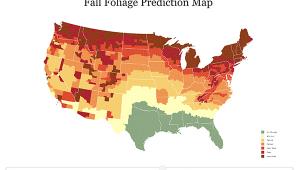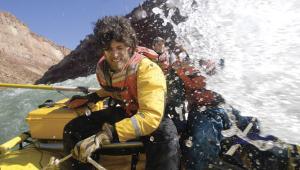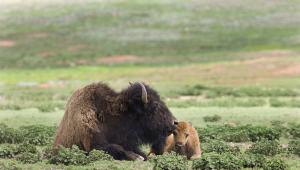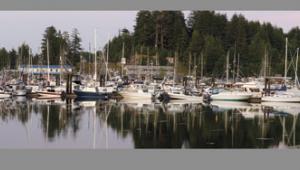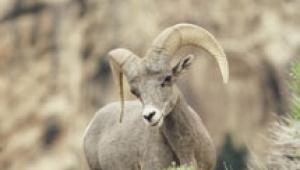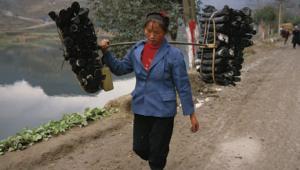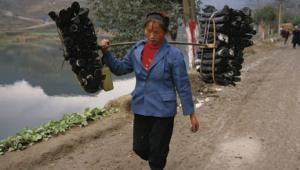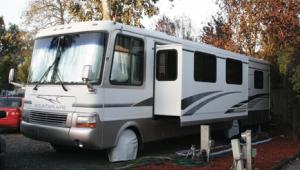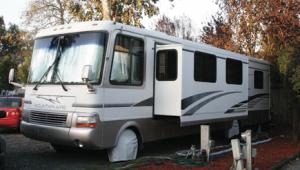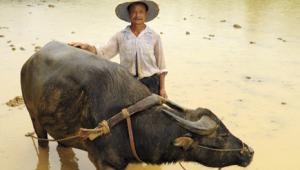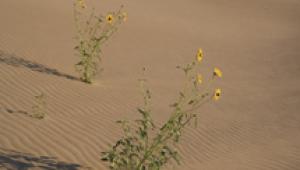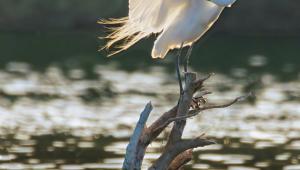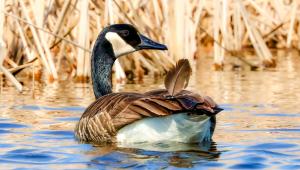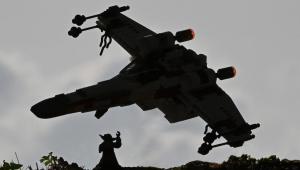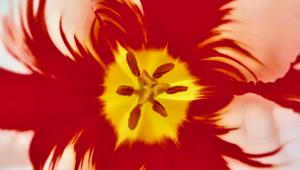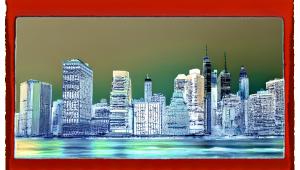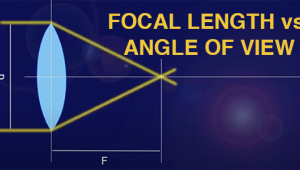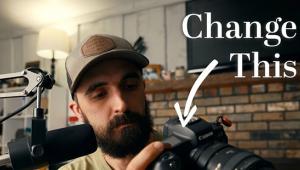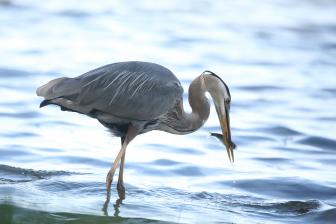Backpacking With Photo Gear
Tips On What To Carry Into The Great Outdoors Page 2
At this point it would seem that stashing my vest in my pack puts me back in the
position of having to stop and shed my backpack any time I want to use my camera.
Not so, for I carry my photo essentials in a small chest pack. A fancy one isn't
necessary; the one I use was a giveaway from a photo magazine subscription. The
weight of the chest pack is borne by a neck strap and a strap around one's
torso keeps the pack from bouncing around. A small chest pack can carry a remarkable
amount of equipment. In mine I carry a 35mm camera body, three lenses, five filters,
extra film, a lens hood, and a microfiber cloth. I even throw in some of my business
cards to hand out on the trail. In short, I've got the heart of my outfit
right under my nose, instantly accessible at all times.
Then there's the most important of all accessories, a tripod. In nature
photography one needs a tripod, period. I wouldn't dream of backpacking
without one. Making a concession to weight I leave my normal tripod at home, carrying
instead a somewhat less capable but significantly lighter tripod. When selecting
your backpacking tripod you shouldn't go overboard saving weight. A flimsy
plastic tripod is feather-light, but useless for serious work. I suggest a tripod
with legs made of aluminum, or better yet carbon fiber if you can afford it. Settling
for a tripod with a relatively low maximum extension saves weight, and serves
well enough. I tote my tripod strapped to my pack, so it's not immediately
at hand, but I can retrieve it when I need it. Hiking during the midday sunlight
I can often live without the tripod while moving along the trail.
Your lightweight tripod won't be as rock-solid as a heavier one, but it's easy to make it more stable by temporarily adding mass to it. I drape my vest over a knob on the tripod--I'm carrying that heavy vest anyway, I might as well put it to good use. Some photographers carry a nylon sack to load with rocks on the spot to ballast their tripod. Remember always to use a remote shutter release to trigger your tripod-mounted camera to minimize camera vibrations.
If you insist on hiking without a tripod, or if you don't want to stop to get it out, there are tricks you can use to stabilize your handheld camera for sharper pictures. You can brace the camera on a convenient boulder or against a tree trunk. Nestling the camera into a pile of pebbles, sand, or dirt can also keep it steady. You might sit and prop it on your knee. Carrying an empty bag and filling it with sand or dirt makes a beanbag support: place the bag on a solid surface and push the camera into it so it conforms to cradle the camera's shape. (A bag of rice from your food stash serves the same purpose.) Even a wadded-up jacket can serve as a beanbag if you steadily and firmly press the camera down into it while tripping the shutter. Perching the camera on a trekking or ski pole makes a poor person's monopod; or, with two poles, looping each hand strap over the other pole and crossing the poles makes a bipod.
My chest pack, photo vest, and tripod are the keys to my backcountry shooting.
Once I've made camp I reload my vest with all my photo equipment. Then I
can sally forth to explore the vicinity wearing my vest and carrying my tripod
on my shoulder.
I shoot slide film exclusively, so I have to carry plenty of extra film. At 1 oz per 35mm roll, I carry about 2 lbs of film for a week-long trip, the equivalent of a 1 liter bottle of water. (Digital shooters will be happy to be free of this extra load.) Film shouldn't get hot, and I've found that burying my bag of film deep in my pack wrapped up in my clothes keeps it well insulated and surprisingly cool, even on the hottest of days.
Backpacking can take you to scenic places that you wouldn't otherwise see, and leave you there at the best times to shoot. Using my system to carry a full photo rig, or finding a system of your own, will help you make the best pictures you can of these lovely remote areas. Happy trails and happy shooting!
 |
|
|
Your lightweight tripod won't be as rock-solid as a heavier one, but it's easy to make it more stable by temporarily adding mass to it. I drape my vest over a knob on the tripod--I'm carrying that heavy vest anyway, I might as well put it to good use. Some photographers carry a nylon sack to load with rocks on the spot to ballast their tripod. Remember always to use a remote shutter release to trigger your tripod-mounted camera to minimize camera vibrations.
If you insist on hiking without a tripod, or if you don't want to stop to get it out, there are tricks you can use to stabilize your handheld camera for sharper pictures. You can brace the camera on a convenient boulder or against a tree trunk. Nestling the camera into a pile of pebbles, sand, or dirt can also keep it steady. You might sit and prop it on your knee. Carrying an empty bag and filling it with sand or dirt makes a beanbag support: place the bag on a solid surface and push the camera into it so it conforms to cradle the camera's shape. (A bag of rice from your food stash serves the same purpose.) Even a wadded-up jacket can serve as a beanbag if you steadily and firmly press the camera down into it while tripping the shutter. Perching the camera on a trekking or ski pole makes a poor person's monopod; or, with two poles, looping each hand strap over the other pole and crossing the poles makes a bipod.
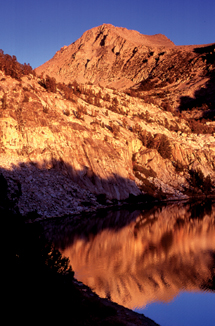 |
|
|
I shoot slide film exclusively, so I have to carry plenty of extra film. At 1 oz per 35mm roll, I carry about 2 lbs of film for a week-long trip, the equivalent of a 1 liter bottle of water. (Digital shooters will be happy to be free of this extra load.) Film shouldn't get hot, and I've found that burying my bag of film deep in my pack wrapped up in my clothes keeps it well insulated and surprisingly cool, even on the hottest of days.
Backpacking can take you to scenic places that you wouldn't otherwise see, and leave you there at the best times to shoot. Using my system to carry a full photo rig, or finding a system of your own, will help you make the best pictures you can of these lovely remote areas. Happy trails and happy shooting!
- Log in or register to post comments
